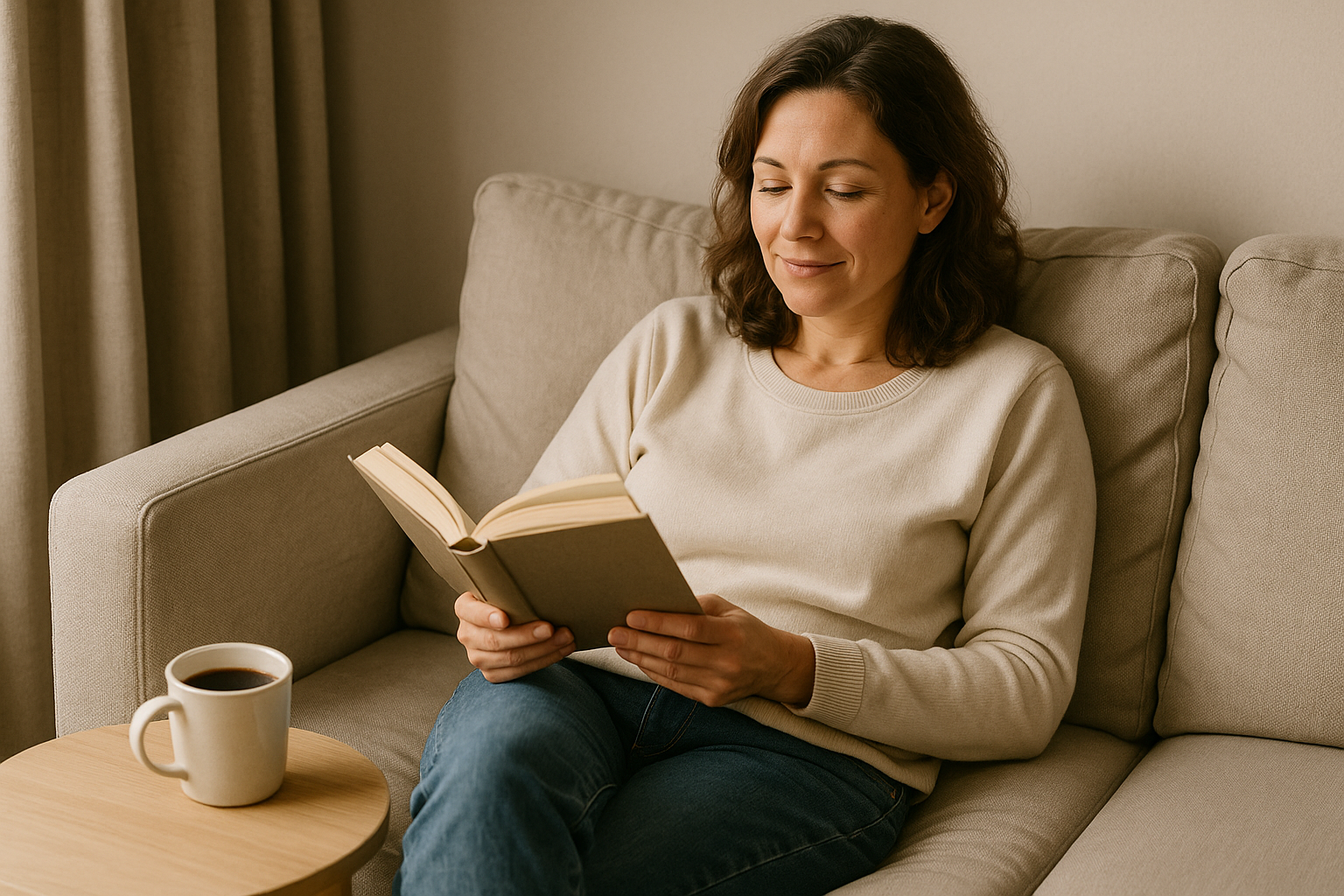Some weeks, everything just feels… off.
Heavier.
Tighter.
Like gravity is working overtime and I forgot how to breathe properly.
If you live with bladder leaks or that dragging, bulging feeling from prolapse, you probably know what I mean.
For me, managing my pelvic floor isn’t about fixing myself, it’s about listening.
Lately, I’ve fallen into a rhythm that helps me reset without overhauling my entire life. Three things: steaming, stretching, and sleeping well.
It’s simple.
It’s doable.
And somehow, it makes a difference.

Steaming: A Warm Pause in a Busy Week
I steam once a week, usually on Sundays.
I don’t do it because it’s trendy or because I expect it to be some miracle cure.
I do it because it’s one of the rare times I sit, unplug, and just… be still.
I use herbs that are known to be calming, lavender, mugwort, chamomile.
The smell is comforting.
The warmth feels grounding.
And while the science is still catching up, some early studies suggest there may be benefits for circulation and tension relief, especially postpartum.¹

These days, I use the Yoni Steamer Seat & Herb Pack.
It fits easily over the toilet and comes with ready-to-go herb blends, so I don’t overthink the process.
I just pour hot water in, sit down, and let the world wait.
Is steaming medically necessary? No.
But for me, it’s about the ritual, not the results.
A small, sensory way to check in with my body instead of constantly managing it.

Stretching: Because My Hips Tell on Me
My hips hold tension like it's their full-time job.
And it turns out, tension in the hips and pelvic floor go hand-in-hand.
I’m not a yogi.
Half the time I’m stretching in pajamas on my living room floor while half-watching TV.
But doing simple poses like child’s pose, happy baby, and supported deep squats has helped me feel more connected to that lower part of my body that I used to just… ignore.
There’s a women’s health PT I follow who said something that stuck with me:
“Your pelvic floor can be tight and weak at the same time.”
That blew my mind.
No wonder I was doing all these Kegels and still feeling off.

On days when I don't have the energy to engage those muscles actively, I sometimes use the EMS Pelvic Floor Massager.
It’s a discreet little patch that sends gentle pulses through my lower abdomen while I stretch or rest.

Sleeping: The Forgotten Healing Tool
This one sounds obvious, but when you’re dealing with prolapse or leaks, sleep gets weird.
You might toss around trying to get comfortable, or wake up needing to pee (again), or avoid drinking water too late and end up dehydrated.
I didn’t realize how much how I was sleeping was affecting how I felt the next day.
Sleeping curled up like a shrimp wasn’t doing my pelvic floor any favors.
Now, I sleep with a pillow between my knees, which helps keep things aligned and reduces that morning heaviness feeling.

I’ve been using the Prolapse Pressure Relief Pillow, it's contoured, memory foam, and doesn’t shift around in the night like a rolled towel would.
Honestly, I forget it’s even there, until I notice how much better I feel in the morning.
Also? I’ve stopped seeing sleep as a break from my healing process.
It’s part of it.
The quiet kind.

What I’ve Learned
I still have days when my body feels wobbly and weird.
But these three things, steaming, stretching, sleeping well, they anchor me.
They remind me that I’m allowed to take care of myself gently.
That effort doesn’t have to look like hustle.
No apps. No timers. Just me and a few simple cues to slow down and listen.
If you’re navigating this same journey, whether it’s prolapse, leaks, or just the invisible weight of a body asking for more kindness, I hope this helps you feel less alone.
Maybe even inspires you to build your own version of a weekly reset.
Not perfect. Just a little softer.
Between kids, leaks, and learning to slow down, I’ve learned that gentle routines matter more than perfect ones.
Here’s to the quiet wins.
With care,
Elena
Mom of two, occasional overthinker, full-time pelvic floor enthusiast
Sources
¹ Okeke, T. C., et al. (2014). “Vaginal steaming: clinical efficacy and cultural practice.” Complementary Therapies in Clinical Practice
² Dr. Bri Grogan, DPT – FemFusion Fitness
³ Stüpp, L., et al. (2011). “Impact of pelvic floor dysfunction on quality of sleep.” Int Urogynecol J




Share:
The Summer Struggle Is Real: Why Prolapse Feels Worse When It’s Hot
Bladder Support Supplement - Post Purchase Flow